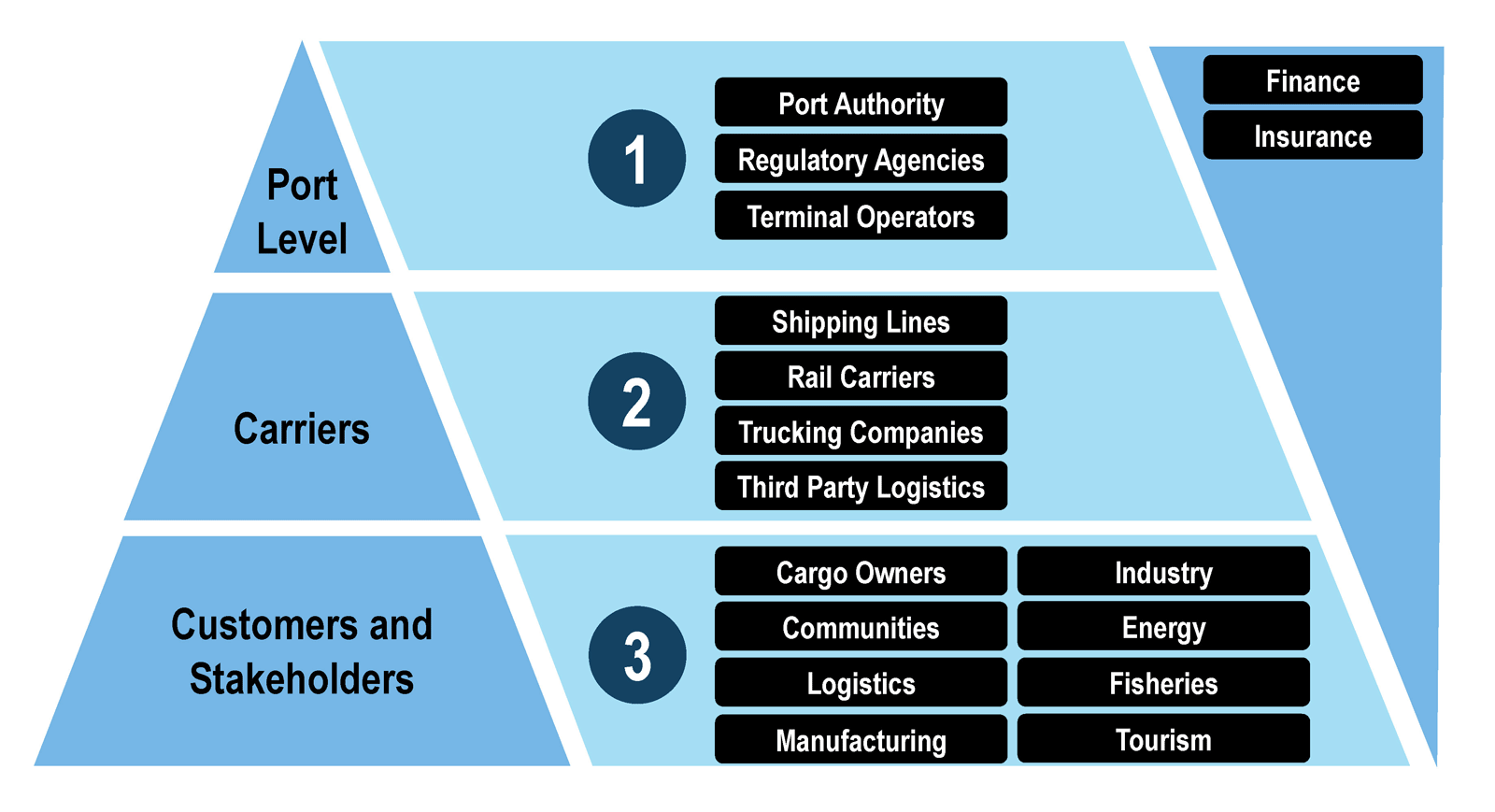Various actors and stakeholders have jurisdiction over, and the potential to intervene on port resilience related issues. These form part of the port resilience ecosystem and include the following layers (figure 3):
- First layer. Actors that are directly involved in a specific port through ownership, oversight, planning and operations. These include port authorities, government and regulatory agencies and terminal operators.
- Second layer. Actors that directly depend on a specific port for their carrying and handling cargo operations. These include shipping companies, ship operators, carriers, inland transport carriers, and third-party logistics service providers. Their actions have an impact on a port’s resilience, and its ability to cope with disruptions as they control freight flows.
- Third layer. Actors that are indirectly impacted by the performance of a port and related carriers, including cargo owners, industrial and manufacturing activities. Their actions can have longer term implications for port resilience and can influence the location and the extent to which their port-related facilities are used. There is also a range of co-located activities depending on the port, such as energy generation facilities, logistics zones, local communities and tourist activities.
- Meta-layer. External actors that price port resilience through the valuation of risks. These mainly include stakeholders from the financial and insurance industries involved in covering risks related to capital investments and commercial loans and the operations of shippers, terminals and cargo.
Figure 3: Actors and layers of intervention in port resilience-building

